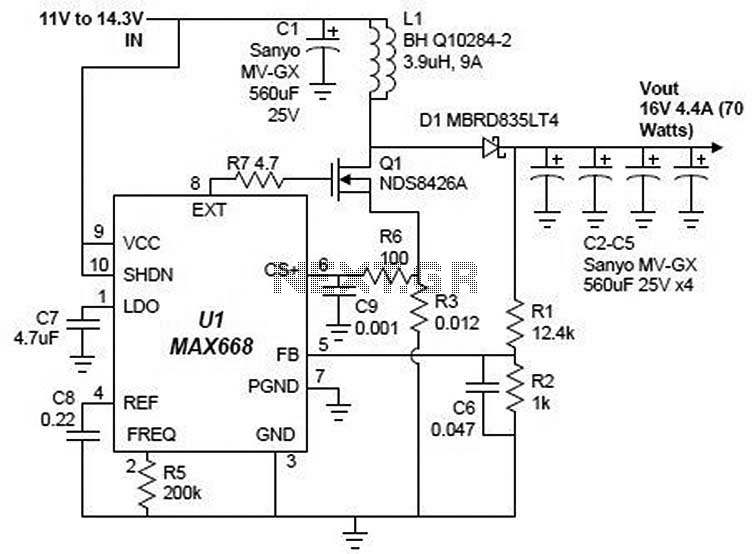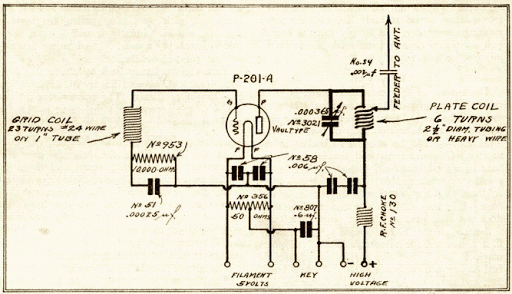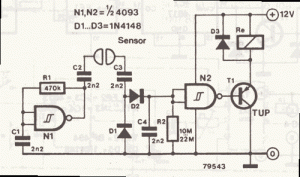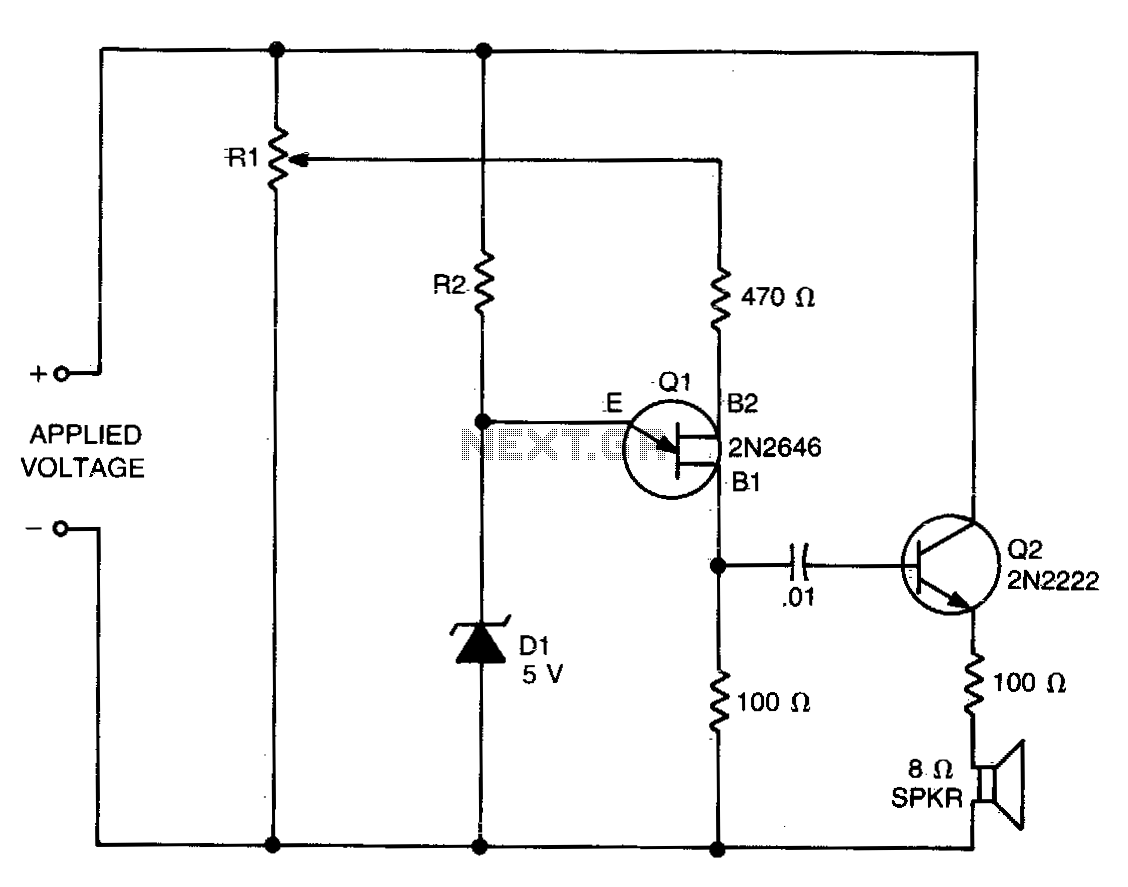
the design of the gas detector of LPC221

The gas detector designed in this instance utilizes an ARM microprocessor as its core for measurement and control. It not only incorporates advanced one-chip computer microprocessing technology from the 1990s but also features several enhancements. The device employs an amplifier for automatic changeover, which has improved measurement accuracy and provides precise alarm notifications. The intelligent gas detection equipment integrates various functions into a cohesive system, going beyond basic data acquisition of gas density and alarm control. It also offers real-time data display and allows for key entry at any time. Furthermore, it includes communication functions such as a user-friendly man-machine interface and data uploading capabilities. Traditional sequential programming methods may hinder the real-time data acquisition necessary for rapid responses to target information, leading to increased programming complexity and maintenance challenges. A real-time operating system can better manage these requirements, ensuring timely handling of incidents and concurrent control of tasks. For this purpose, C/OS-II has been selected as the real-time operating system to optimize system resources. During operation, gas density is converted into an electrical signal by the detection element, amplified by an operational amplifier, and then processed by the CPU's modulus conversion module. The CPU performs logical analysis based on the results of the A/D conversion, comparing them to pre-defined warning thresholds. If the threshold is exceeded, an audible and visual alarm is triggered. Additionally, the system allows for input of location data, configuration of detection machine memory, and system parameters through keyboard operations. Parameters such as density, detection time, and location input are displayed on an LCD. Data is retained in FLASH memory for review and modification at any time. The detector can also communicate bi-directionally with a PC via USB, enabling historical data transmission and analysis of density changes. The power supply unit provides energy to all components. The detection element circuit consists of a sensor circuit, which includes a bridge circuit made up of a catalytic element and resistors, effectively converting density changes into electrical signals. The measurement principle involves a response element, commonly referred to as a black-and-white component, which catalyzes flameless combustion of gas on its surface, increasing the temperature and resistance of the platinum wire in the response element. This change in resistance is measured using a Wheatstone bridge circuit.
The gas detection system is designed to operate in a variety of environments, ensuring reliability and accuracy in gas density measurements. The ARM microprocessor serves as the brain of the device, executing real-time tasks and managing the various functionalities of the detector. The incorporation of a real-time operating system like C/OS-II allows for efficient multitasking, where the CPU can handle multiple operations simultaneously, such as data acquisition, alarm processing, and user interface interactions.
The detection element is a crucial component of the system, utilizing advanced sensor technology to accurately measure gas concentrations. The catalytic element within the sensor reacts with specific gases, generating heat that alters the resistance of the platinum wire. This change is detected by the Wheatstone bridge, which converts the resistance variation into a measurable electrical signal. The signal is then processed by the CPU, which determines if the gas concentration exceeds safe levels and triggers the appropriate alarms.
The user interface is designed to be intuitive, allowing operators to easily navigate through different functions, input data, and monitor gas levels in real time. The LCD display provides clear visibility of critical parameters, ensuring that users can quickly assess the status of the environment being monitored. Additionally, the ability to store data in FLASH memory allows for easy retrieval and modification, making it a versatile tool for both real-time monitoring and historical analysis.
Communication capabilities, including USB connectivity, enhance the functionality of the gas detector by enabling data transfer to external devices for further analysis. This feature is particularly beneficial for maintaining records and conducting detailed assessments of gas concentration trends over time. The power supply unit ensures that all components operate efficiently, providing the necessary energy to maintain continuous operation.
In summary, this gas detection system represents a significant advancement in technology, combining intelligent design with robust functionality to ensure accurate and reliable monitoring of gas concentrations in various applications.The gas detector designed this time is that have adopted the intelligence taking ARM microprocessor as the core to measure the control equipment, it not merely adopts the internationally advanced one-chip computer microprocessing of 1990s, also have the following characteristics: Adopt the appearance to use the amplifier, but automatic change-over quantum, has improved survey accuracy, the examining value calls the police accurately; The intellectual gas checkout equipment incorporates various functions into an organic whole, should not merely realize the basic function of the data acquisition of the gas density, controlling alarm etc. , and also want the measured data of real-time display, accept key entry at any time. In addition, should have communication functions such as friendly man-machine interface and uploading data, etc.
If adopt the traditional sequential structure programming thought, it is very difficult to guarantee the real-time nature of data acquisition will be required, it is unable to deal with and make fast response to each target`s real-time information for the quick speed enough. The complexity of its programming will be raised greatly too, will maintain and revise on later stage when unfavorable to the procedure.
And real-time operating system can make the rigorous estimation by situation such as being most broken preferably to running situation. Sex when in fact than before and after have much more better sets of system, can last request of incidents asynchronouses external system in time, finish the treatment to this incident within specific time, all real-time task coordinate of concurrent control runs concurrently.
Proceed from reality this time, choose C/OS-II as the real-time operating system, let it manage each utility program, achieve the goal of optimizing the system resource. While working, the gas density is turned into the electric signal by the detecting element, nurse one`s health through the magnification of the operational amplifier unit, then send into the modulus conversion module of CPU; CPU judges logical analysis according to the result that A/D changes, compares with warning threshold value designed in advance, if go beyond threshold value and carry on the sound and light alarm.
And then can realize and measure functions such as the input of the place, arrangement of detection machine format memory and system parameter, etc. through the operation of the keyboard. Density, detection time, the place to input, corresponding function interface, etc. data parameter of measuring reveal through LCD. Be presumed various data until keyboard gone on, and keep on FLASH, at any time can Make Changes and look over.
The detector can also realize through the both-way communication of USB communication protocol and Pc machine the historical machine format transmission, density change functions such as the analysis of the situation, etc. The power supply unit offers energy for the above-mentioned each cell module. The circuit of detecting element is the circuit of the sensor, the bridge circuit composed of catalysis element and resistance, realize the density is not that an electric signal turns into the function of the electric signal.
It measures the principle: Utilize the response element commonly called as the black-and-white component Make to the catalysis of the gas flameless combustion take place on the surface of the component in the gas, let heat to make the component temperature rise, has increased the resistance quantity of the platinum wire of response element, through the measurement circuit of wheatstone bridge, can measure its response element resistance quantity variable quantit 🔗 External reference
The gas detection system is designed to operate in a variety of environments, ensuring reliability and accuracy in gas density measurements. The ARM microprocessor serves as the brain of the device, executing real-time tasks and managing the various functionalities of the detector. The incorporation of a real-time operating system like C/OS-II allows for efficient multitasking, where the CPU can handle multiple operations simultaneously, such as data acquisition, alarm processing, and user interface interactions.
The detection element is a crucial component of the system, utilizing advanced sensor technology to accurately measure gas concentrations. The catalytic element within the sensor reacts with specific gases, generating heat that alters the resistance of the platinum wire. This change is detected by the Wheatstone bridge, which converts the resistance variation into a measurable electrical signal. The signal is then processed by the CPU, which determines if the gas concentration exceeds safe levels and triggers the appropriate alarms.
The user interface is designed to be intuitive, allowing operators to easily navigate through different functions, input data, and monitor gas levels in real time. The LCD display provides clear visibility of critical parameters, ensuring that users can quickly assess the status of the environment being monitored. Additionally, the ability to store data in FLASH memory allows for easy retrieval and modification, making it a versatile tool for both real-time monitoring and historical analysis.
Communication capabilities, including USB connectivity, enhance the functionality of the gas detector by enabling data transfer to external devices for further analysis. This feature is particularly beneficial for maintaining records and conducting detailed assessments of gas concentration trends over time. The power supply unit ensures that all components operate efficiently, providing the necessary energy to maintain continuous operation.
In summary, this gas detection system represents a significant advancement in technology, combining intelligent design with robust functionality to ensure accurate and reliable monitoring of gas concentrations in various applications.The gas detector designed this time is that have adopted the intelligence taking ARM microprocessor as the core to measure the control equipment, it not merely adopts the internationally advanced one-chip computer microprocessing of 1990s, also have the following characteristics: Adopt the appearance to use the amplifier, but automatic change-over quantum, has improved survey accuracy, the examining value calls the police accurately; The intellectual gas checkout equipment incorporates various functions into an organic whole, should not merely realize the basic function of the data acquisition of the gas density, controlling alarm etc. , and also want the measured data of real-time display, accept key entry at any time. In addition, should have communication functions such as friendly man-machine interface and uploading data, etc.
If adopt the traditional sequential structure programming thought, it is very difficult to guarantee the real-time nature of data acquisition will be required, it is unable to deal with and make fast response to each target`s real-time information for the quick speed enough. The complexity of its programming will be raised greatly too, will maintain and revise on later stage when unfavorable to the procedure.
And real-time operating system can make the rigorous estimation by situation such as being most broken preferably to running situation. Sex when in fact than before and after have much more better sets of system, can last request of incidents asynchronouses external system in time, finish the treatment to this incident within specific time, all real-time task coordinate of concurrent control runs concurrently.
Proceed from reality this time, choose C/OS-II as the real-time operating system, let it manage each utility program, achieve the goal of optimizing the system resource. While working, the gas density is turned into the electric signal by the detecting element, nurse one`s health through the magnification of the operational amplifier unit, then send into the modulus conversion module of CPU; CPU judges logical analysis according to the result that A/D changes, compares with warning threshold value designed in advance, if go beyond threshold value and carry on the sound and light alarm.
And then can realize and measure functions such as the input of the place, arrangement of detection machine format memory and system parameter, etc. through the operation of the keyboard. Density, detection time, the place to input, corresponding function interface, etc. data parameter of measuring reveal through LCD. Be presumed various data until keyboard gone on, and keep on FLASH, at any time can Make Changes and look over.
The detector can also realize through the both-way communication of USB communication protocol and Pc machine the historical machine format transmission, density change functions such as the analysis of the situation, etc. The power supply unit offers energy for the above-mentioned each cell module. The circuit of detecting element is the circuit of the sensor, the bridge circuit composed of catalysis element and resistance, realize the density is not that an electric signal turns into the function of the electric signal.
It measures the principle: Utilize the response element commonly called as the black-and-white component Make to the catalysis of the gas flameless combustion take place on the surface of the component in the gas, let heat to make the component temperature rise, has increased the resistance quantity of the platinum wire of response element, through the measurement circuit of wheatstone bridge, can measure its response element resistance quantity variable quantit 🔗 External reference





